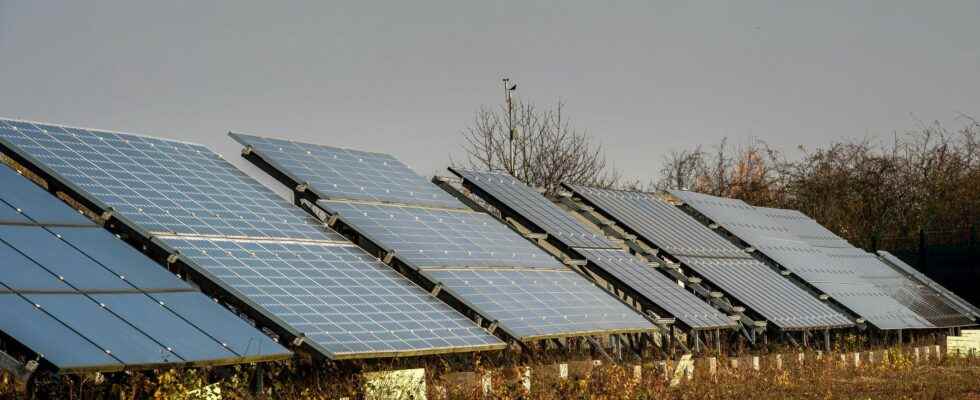Le Mené is in the home stretch. The small town of Côtes d’Armor, which has just over 6,000 inhabitants, should soon receive five wind turbines, which will allow it to become self-sufficient in electricity. A success in advance for this territory, a pioneer of the transition, which had given itself the project in 2005 of becoming autonomous in terms of energy twenty years later. “If we focus on electricity once the wind farm is developed, local production will be greater than consumption, so we will be autonomous in this regard”, says Florian Grass from the municipality’s sustainable development department.
In Le Mené, a very rural territory, formed from the merger of seven municipalities in 2016, the question of energy transition has been in the works for a long time. In the 1990s, a group of farmers embarked on anaerobic digestion to reuse slurry, which then caused pollution problems. “The methanizer project opened up reflection on energy, then on the possibility of becoming autonomous, and this has thus become the red thread of the development of the territory”, relates Florian Grass. Today the municipal buildings and private houses are covered with solar panels, and the future wind farm from a residents’ association should make it possible to meet the annual consumption of around 6,000 households.
In terms of overall energy, however, some shadows remain: wood-fired boilers are used to supply heating networks in five of the town’s seven towns, but for the rest of the oil-fired boilers remain in operation in individuals, and in terms of mobility, the thermal individual car remains essential. “This is the most complicated point, apart from a few electric cars, we cannot say that we are autumn”, concedes Florian Grass.
Autonomy is not autarky
Béganne in Morbihan, or even Malaunay in Seine-Maritime… in the wake of Le Mené, several municipalities and intermunicipalities in France are also trying to take the turn towards autonomy by transforming their heating methods, their consumption and the production of ‘electricity. These initiatives, Anne Auclair knows them well. The latter pilots within the CLER (an association that works for energy transition) the network of Positive Energy Territories (Tepos), and in recent years the number of members has only increased. “The network is growing steadily, but for some time the short-term motivations have mainly focused on the solutions that can be put in place so that the municipalities can get through the winter”. A very concrete consequence at a time of the energy crisis. Because for many municipalities, energy autonomy is above all a solution to no longer be dependent on fluctuating energy prices, by balancing their expenses.
For these communities at the forefront of energy, autonomy is above all not autarky. “Our objective is to balance our balance between production and consumption and we remain connected to the electricity grid”, defends Florian Grass. A necessity with regard to these modes of production of renewable energies that are not very controllable. “During periods that are less favorable in terms of weather, energy needs will have to be covered by other solutions which are not necessarily installed on site”, underlines Stefan Louillat, head of the Renewable Electricity and Networks department within the Agence de l’Europe. environment and energy management (ADEME).
Different scales
The agency rather pleads for collective self-consumption. This solution makes it possible to share the electricity produced locally, between the producer and the consumers. And for three years, under the effect of a regulatory adjustment, the practice has exploded. According to Enedis, which manages the electricity distribution network, between 2019 and 2022 the number of self-consumption connection operations in France increased from 20 to 130. And this is still accelerating. “There is a fairly significant increase in the number of operations which is mainly driven by local authorities which have taken up the subject, and today there is a real boom with the energy crisis”, comments Loïc Blanc, coordinator of Enercoop Midi-Pyrénées, an electricity production cooperative.
These self-consumption projects sometimes have very different scales. In Appy, in Ariège, since this summer two photovoltaic power stations can now produce 34 megawatt hours of electricity per year. Enough to support up to 35% of the consumption of the fifteen households of this small village. Another city, another scale, in Dijon, a vast operation of renovation and installation of photovoltaic panels should allow 1,100 inhabitants of the popular district of Fontaine d’Ouche to produce 20% more energy than their consumption. A pilot project partly funded by the European Union and which should allow Dijon to become a positive energy city in 2040.
What will be the impact of these initiatives on the overall transition of the French territory? Although still relatively anecdotal, these projects are consistent with the growing needs for the production of renewable energies, and can form a network of production sites with various powers. In its report on energy futures, all the scenarios of RTE (the operator of the electricity transmission network) lead to a majority share of renewables in the electricity mix by 2050, and in particular a multiplication by 7 to 12 of photovoltaic capacities. installed by then. “There is no single road to carbon neutrality by 2050, we are on a path that goes through different possible patterns and self-consumption or autonomy projects will find their place alongside other more ambitious projects. in terms of power”, emphasizes Stefan Louillat. In the meantime, these collective successes now show the way to a primarily local transition.
